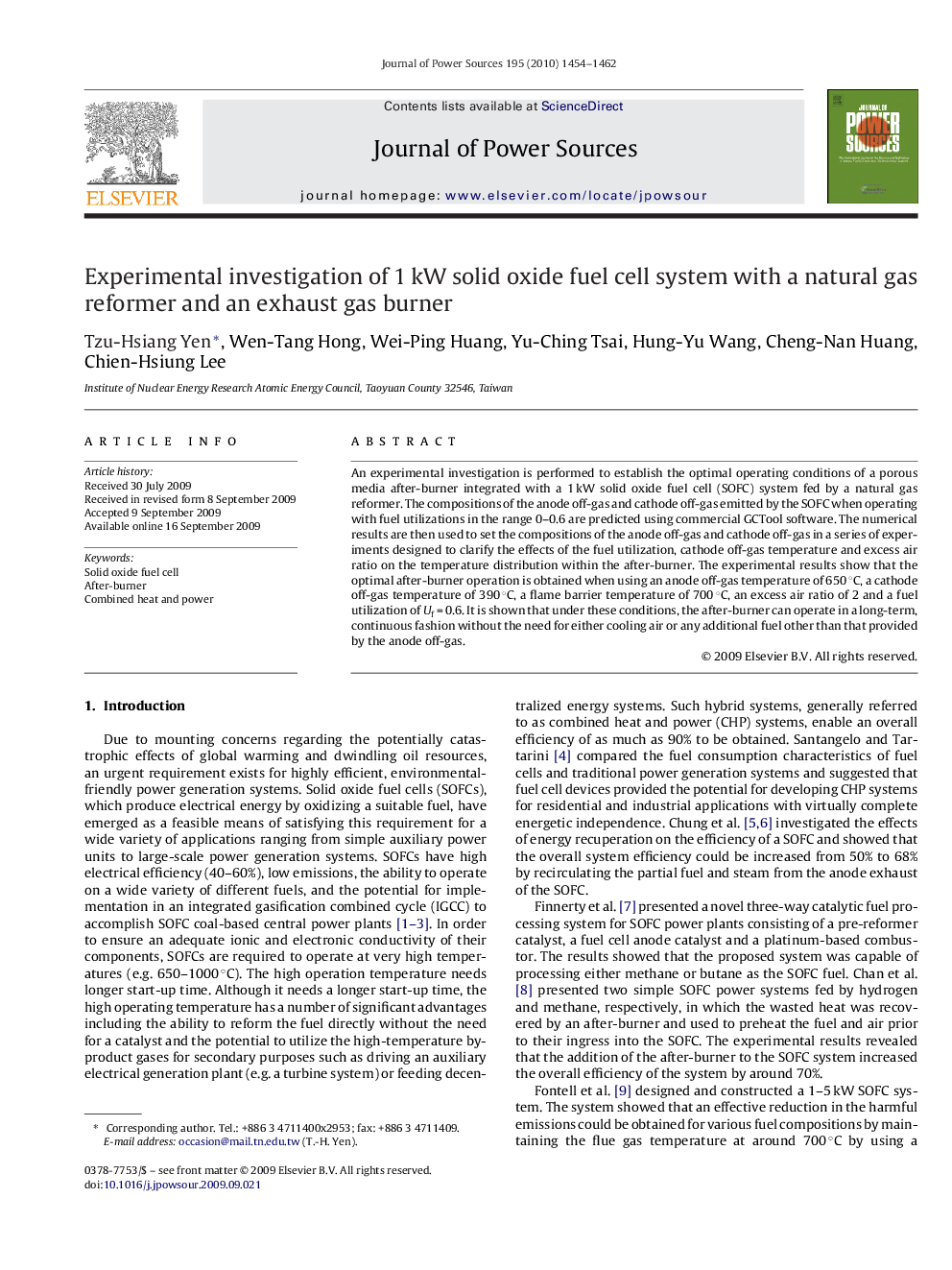| Article ID | Journal | Published Year | Pages | File Type |
|---|---|---|---|---|
| 1293827 | Journal of Power Sources | 2010 | 9 Pages |
An experimental investigation is performed to establish the optimal operating conditions of a porous media after-burner integrated with a 1 kW solid oxide fuel cell (SOFC) system fed by a natural gas reformer. The compositions of the anode off-gas and cathode off-gas emitted by the SOFC when operating with fuel utilizations in the range 0–0.6 are predicted using commercial GCTool software. The numerical results are then used to set the compositions of the anode off-gas and cathode off-gas in a series of experiments designed to clarify the effects of the fuel utilization, cathode off-gas temperature and excess air ratio on the temperature distribution within the after-burner. The experimental results show that the optimal after-burner operation is obtained when using an anode off-gas temperature of 650 °C, a cathode off-gas temperature of 390 °C, a flame barrier temperature of 700 °C, an excess air ratio of 2 and a fuel utilization of Uf = 0.6. It is shown that under these conditions, the after-burner can operate in a long-term, continuous fashion without the need for either cooling air or any additional fuel other than that provided by the anode off-gas.
